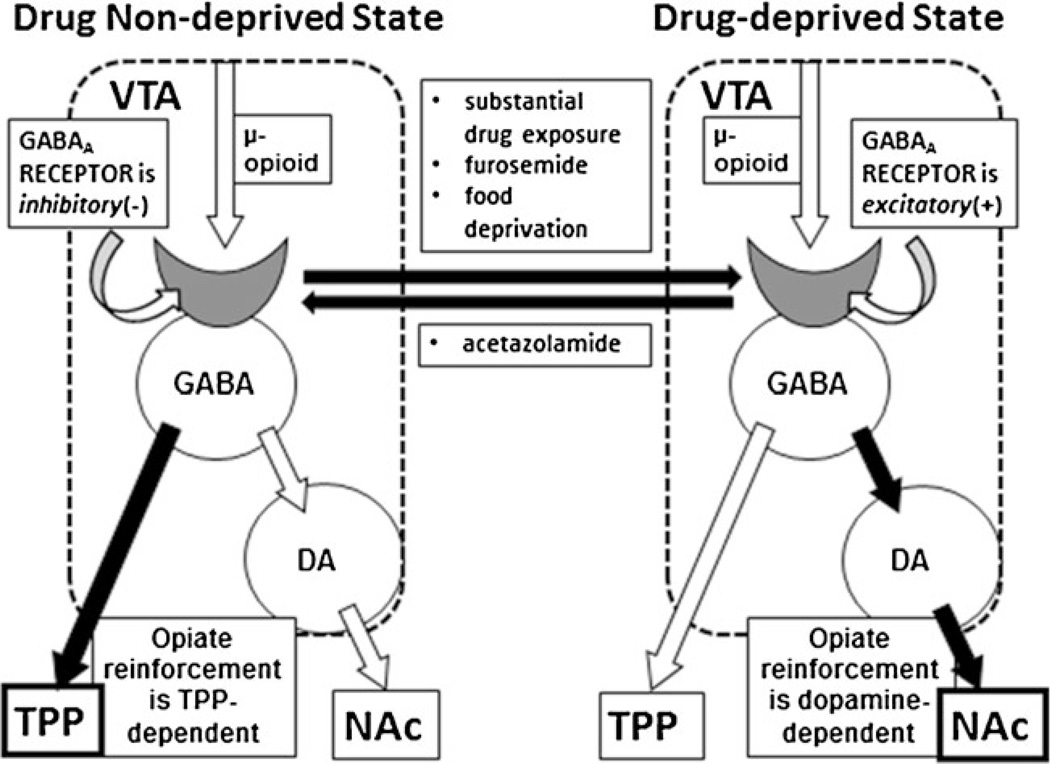Fig. 7.
A hypothetical representation of opiate motivation in the non-deprived and drug-dependent and withdrawn motivational states. In non-deprived animals (left), activation of VTA GABAA receptors produces hyperpolarization (inhibition). Opiate binding to presynaptic µ-opioid receptors reduces GABAA receptor activation. Consequently, VTA GABA cells are depolarized as a result of the loss of an inhibitory input. In turn, VTA dopamine cells remain inhibited, and an opiate reinforcement signal is sent to the TPP. Conversely, in opiate-deprived animals (right), activation of VTA GABAA receptors produces depolarization (excitation). Opiate binding to presynaptic µ-opioid receptors again reduces VTA GABAA receptor activation. In turn, VTA GABA cells are hyperpolarized due to the loss of an excitatory input, and VTA dopamine cells are disinhibited, leading to the production of a dopamine-dependent opiate motivational signal initiated in the VTA and terminating in the NAc. The change to a drug-deprived state can be accomplished by extensive opiate exposure (enough to produce withdrawal), intra-VTA furosemide administration, or food deprivation, and can be prevented by intra-VTA acetazolamide administration

